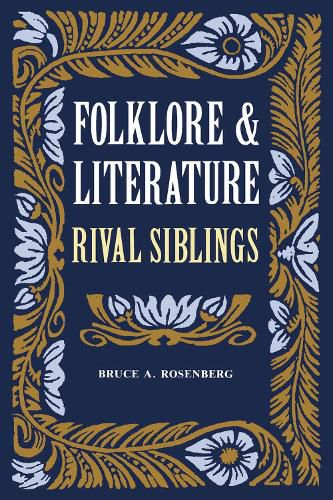Readings Newsletter
Become a Readings Member to make your shopping experience even easier.
Sign in or sign up for free!
You’re not far away from qualifying for FREE standard shipping within Australia
You’ve qualified for FREE standard shipping within Australia
The cart is loading…






Only a few decades ago, American folklore research focused primarily on narrative folklore with obvious literary connections, such as the ballad and the folktale. In the past twenty years, however, folklore studies have veered sharply away from literature and even from text-based products to focus largely on oral folkloric process. In this thoughtful work, a distinguished scholar describes key ways in which theories and methodologies developed in such oral folklore studies have benefited literary criticism and analysis.
Vladimir Propp devised a theory of structuralism to examine folktales. Popularized versions of Propp’s theory were used in literary theory for nearly twenty years. Parry and Lord, using folkloric techniques to study Yugoslavian folksingers as a means of learning how Homeric epics were composed, established principles since employed by thousands of literary critics. Folk narratives persist in contemporary life and literature in such forms as urban legends. Knowledge of folk custom, ritual, and belief can enhance aesthetic understanding. And analyzing lineality and simultaneity in literature and folklore yields fruitful insights.
In addition to summarizing extant ideas and studies, Bruce Rosenberg offers surprising new interpretations and discoveries that expand the boundaries of both folklore and literature. Illustrating his contentions with examples from widely varying periods and cultures, the author affirms the unique potential of interdisciplinary inquiry.
$9.00 standard shipping within Australia
FREE standard shipping within Australia for orders over $100.00
Express & International shipping calculated at checkout
Only a few decades ago, American folklore research focused primarily on narrative folklore with obvious literary connections, such as the ballad and the folktale. In the past twenty years, however, folklore studies have veered sharply away from literature and even from text-based products to focus largely on oral folkloric process. In this thoughtful work, a distinguished scholar describes key ways in which theories and methodologies developed in such oral folklore studies have benefited literary criticism and analysis.
Vladimir Propp devised a theory of structuralism to examine folktales. Popularized versions of Propp’s theory were used in literary theory for nearly twenty years. Parry and Lord, using folkloric techniques to study Yugoslavian folksingers as a means of learning how Homeric epics were composed, established principles since employed by thousands of literary critics. Folk narratives persist in contemporary life and literature in such forms as urban legends. Knowledge of folk custom, ritual, and belief can enhance aesthetic understanding. And analyzing lineality and simultaneity in literature and folklore yields fruitful insights.
In addition to summarizing extant ideas and studies, Bruce Rosenberg offers surprising new interpretations and discoveries that expand the boundaries of both folklore and literature. Illustrating his contentions with examples from widely varying periods and cultures, the author affirms the unique potential of interdisciplinary inquiry.